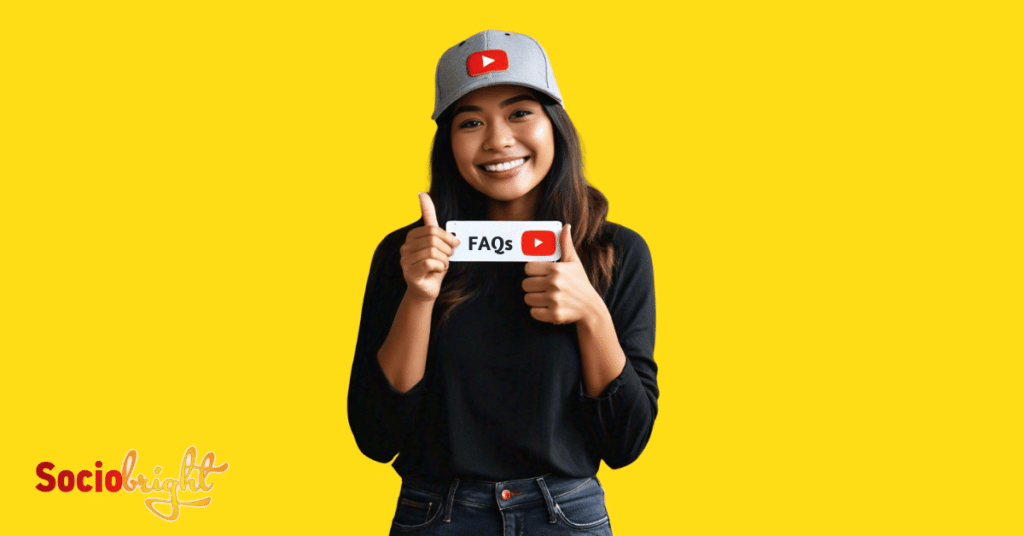YouTube Advertising in 2024: An Introduction
With the steady growth and trends in digital marketing, YouTube advertising remains a powerful tool for businesses to reach their target audience effectively. With over 2.5 billion monthly active users, YouTube offers an unparalleled opportunity to engage with potential customers through creative and targeted video ads.
In this comprehensive guide, we’ll explore the latest trends and strategies in YouTube advertising, including 8 savvy YouTube advertising tips, the cost, choosing the right agency, the power of YouTube video advertising, exploring YouTube Amazon advertising, traffic sources, YouTube Shorts advertising strategies, mastering targeting, the benefits, strategies for small businesses, and YouTube advertising for beginners.
Stay tuned for the most up-to-date information as of October 2025.

8 Savvy YouTube Advertising Tips
YouTube advertising has proven to be a game-changer in digital marketing. With its vast user base and highly engaging video format, businesses can leverage YouTube ads to reach their desired audience and drive conversions effectively. Here are 8 savvy tips to maximize your YouTube advertising efforts:
1. Know Your Target Audience
Understanding your target audience is the foundation of any successful YouTube advertising campaign. Take the time to research your ideal customer’s demographics, interests, and behaviors. YouTube’s targeting options allow you to reach people based on age, gender, location, interests, and even life events. By tailoring your ads to your target audience, you can increase the likelihood of engagement and conversions.
To gather valuable insights about your audience, utilize tools like Google Analytics and YouTube Analytics. These platforms provide data on viewer demographics, watch time and engagement metrics. Analyze this information to refine your targeting strategy and create ad content that resonates with your audience.
Pro Tip: To stay updated on advertising trends and other marketing tips, subscribe to Sociobright’s push notifications.
2. Craft Compelling Ad Content
In YouTube, capturing viewers’ attention is crucial. Your ad content should be visually appealing, emotionally engaging, and aligned with your brand message. Start with a strong hook within the first 5 seconds to prevent viewers from skipping your ad. Use storytelling techniques to create a narrative that resonates with your audience and keeps them engaged throughout the video.
Consider incorporating humor, emotion, or thought-provoking elements to make your ad memorable. Ensure your ad’s visuals, audio, and messaging are high quality and consistent with your brand guidelines. A well-crafted ad captures attention and leaves a lasting impression on potential customers.
3. Optimize for Mobile Viewing
With most YouTube views coming from mobile devices, optimizing your ads for mobile viewing is essential. Design your ad content with a mobile-first approach, considering factors like screen size, aspect ratio, and sound. Use clear and legible text, and ensure your ad’s message is easily understandable even without sound, as many mobile users watch videos with the sound turned off.
To enhance the mobile viewing experience, consider using vertical video formats like YouTube Shorts. These short-form videos are designed for mobile consumption and can be an effective way to engage with your audience on the go. Adapt your ad content to fit the vertical format and leverage the power of YouTube Shorts to reach a wider audience.
4. Leverage Remarketing
Remarketing is a powerful technique that allows you to reach users who have previously interacted with your brand. By placing a YouTube remarketing tag on your website, you can create custom audiences based on specific actions, such as visiting a page or watching a particular video. You can then target these audiences with tailored ad content, increasing the likelihood of conversion.
Remarketing helps you stay top-of-mind with potential customers who have already shown interest in your brand. Use this opportunity to showcase relevant products, offer exclusive discounts, or provide additional value to encourage them to take action.
5. Experiment with Ad Formats
YouTube offers a variety of ad formats to suit different marketing objectives and target audiences. Experiment with other ad formats to find the best ones for your brand. Some popular ad formats include TrueView In-Stream Ads, which are skippable ads that play before, during, or after YouTube videos.
TrueView Discovery Ads appear alongside YouTube video recommendations and search results and on the YouTube mobile homepage. Bumper Ads are short, non-skippable ads that are 6 seconds or shorter. They are designed to drive brand awareness and reach.
Masthead Ads are large, prominent ads that appear at the top of the YouTube homepage for 24 hours. They offer high visibility and can drive significant traffic to your channel or website.
By testing different ad formats, you can identify the ones that resonate best with your audience and achieve your desired outcomes, whether increasing brand awareness, driving website traffic, or generating leads.
6. Utilize YouTube’s Targeting Options
YouTube offers a wide range of targeting options to help you reach the right audience at the right time. Leverage these targeting capabilities to ensure your ads are shown to users most likely interested in your products or services. Some key targeting options include:
7. Measure and Analyze Performance
Measuring and analyzing the performance of your YouTube advertising campaigns is crucial for making data-driven decisions and optimizing your results. YouTube provides detailed analytics and metrics to help you track the success of your ads. Some key metrics to monitor include view rate, watch time, clicks, and conversions.
8. Collaborate with Influencers
Influencer marketing is a powerful tool for businesses looking to reach new audiences and build brand credibility. Collaborating with influencers on YouTube can help you tap into their engaged follower base and leverage their authenticity to promote your products or services.
Identify influencers who align with your brand values and have a following that overlaps with your target audience. Reach out to them to discuss potential partnership opportunities, such as sponsored videos, product reviews, or brand mentions.
When collaborating with influencers, ensure the partnership is transparent and complies with YouTube’s advertising policies and FTC guidelines.
Understanding the Cost of YouTube Ads
The cost of YouTube Advertising varies significantly and is influenced by many factors. YouTube ads have an average cost-per-view of $0.010 – $0.030, and the views that you generate will count towards your overall YouTube viewer count. The average cost of reaching 100,000 viewers is around $2,000. On average, YouTube advertising costs $0.11 – $0.50 per view, with businesses typically setting a daily budget of $10.
The table below shows factors that influence the cost of YouTube Advertising.
| Factor | Description |
|---|---|
| Ad Format | YouTube offers a variety of ad formats including in-feed video ads, skippable video ads, non-skippable video ads, and bumper ads. The format you choose can affect the cost. |
| Targeting Options | The more specific your targeting (by age, gender, location, interests, etc.), the more you’re likely to pay. |
| Quality of Ad | High-quality, engaging ads may lead to higher viewer engagement and lower costs. |
| Bidding Strategy | YouTube offers a variety of ad formats, including in-feed video ads, skippable video ads, non-skippable video ads, and bumper ads. The format you choose can affect the cost. |
Choosing the Right YouTube Advertising Agency
Choosing the right agency for your business’s YouTube Advertising is crucial. Some reputable YouTube Advertising agencies that stand out for their unique features include:
- Single Grain: Known for its tailored strategies that substantially elevate business performance.
- Disruptive Advertising: They specialize in running YouTube ads that convert.
- Brafton: Offers a comprehensive range of services, including video production, optimization, distribution, analytics, and even advertising.
- WebFX: Known for delivering successful campaigns that drive results for B2B enterprises.
- Ignite Visibility: A leader in SEO, online advertising, email, social media, and digital marketing.
- SmartSites: Outsmart the competition with best-in-class digital marketing services.
- Intero Digital: Driven by patented technology and proven strategies, they work to take market share from your competitors, increase your brand equity, grow qualified traffic, and increase your revenue and ROI.
To find the best advertising agency and learn how to do it yourself, check out these Advertising Guides.

The Power of YouTube Video Advertising
One of the main advantages of YouTube Video Advertising is its targeting capabilities. Advertisers can target viewers based on their Google search history, in addition to their viewing behaviors. This allows for highly targeted advertising, ensuring your ads reach the most relevant audience.
However, like any advertising platform, YouTube Video Advertising has challenges. Creating engaging content that stands out in videos can be challenging. Additionally, measuring the success of video ads requires a clear understanding of key performance indicators(KPIs) and the ability to track these metrics accurately.
Despite these challenges, YouTube Video Advertising offers significant potential for businesses. With the right strategy and execution, it can drive brand awareness, increase website traffic, and boost conversions. Therefore, it’s an excellent option for all businesses, regardless of size or industry.
Exploring YouTube Amazon Advertising
Amazon, a global powerhouse in e-commerce and cloud computing, has also made significant strides in advertising. Leveraging its vast consumer data, Amazon offers advertisers targeted and effective ad solutions across various platforms, including YouTube. YouTube Amazon Advertising is a dynamic way for businesses to reach their audience where they are most engaged.
Amazon’s advertising approach on YouTube is multifaceted, involving a range of ad formats from video ads to display banners and sponsored content. These ads are integrated within YouTube’s ecosystem, appearing before videos as pre-roll ads, within video suggestions, or even on the YouTube homepage. The key to Amazon’s advertising success on YouTube lies in its data-driven targeting capabilities.
Moreover, Amazon’s advertising tools are designed to be accessible to businesses of all sizes. Local businesses, for instance, can tap into the power of YouTube Amazon Advertising to drive ROI through targeted ad campaigns, utilizing Amazon’s rich first-party data for precise audience targeting. This level of accessibility is crucial in an advertising landscape that is increasingly competitive and saturated.
YouTube Ads Traffic Source
YouTube’s vast audience and diverse content make it an ideal space for advertisers to connect with potential customers. The traffic sources for YouTube advertising are as varied as the platform’s user base, encompassing direct searches, suggested videos, external websites, and more.
One of the primary traffic sources for YouTube ads is the YouTube search function, where users actively seek out content related to their interests. Ads placed here can capture the attention of viewers who are already inclined toward specific topics or products.
Another significant source is the suggested videos feature, which recommends content based on the viewer’s past activity and preferences. This allows advertisers to reach audiences who may not have been actively searching for their product but are likely interested based on their viewing history.
External websites and apps also contribute to YouTube ad traffic, directing viewers to the platform through embedded videos or links. This cross-platform integration broadens the reach of YouTube ads, tapping into audiences outside the YouTube ecosystem. Additionally, social media platforms serve as a vital traffic source, with users sharing and engaging with YouTube content across their networks.
Understanding and optimizing for these traffic sources is crucial for advertisers looking to maximize their YouTube ad performance. Businesses can enhance their visibility and engagement on the platform by tailoring content and targeting strategies to align with how viewers discover videos.

YouTube Shorts Advertising Strategy
YouTube videos and YouTube Shorts represent two distinct content experiences on the platform. While traditional YouTube videos offer longer-form content, YouTube Shorts are designed for quick, engaging clips that cater to the mobile-first audience. As such, advertising strategies for YouTube Shorts require a different approach, focusing on brevity and impact.
Some strategies to consider when using YouTube Shorts advertising:
- Create concise, attention-grabbing content: Shorts ads should be quick and to the point, capturing the viewer’s interest within the first few seconds.
- Leverage vertical video format: Design your ads to fit the vertical viewing experience of Shorts, ensuring they are visually appealing and immersive on mobile devices.
- Target mobile audiences: Since Shorts are primarily consumed on mobile, tailor your ads to the mobile user’s behavior and preferences.
- Utilize clear call-to-actions: Encourage viewers to engage with your brand by including a straightforward and compelling call-to-action in your Shorts ads.
- Monitor performance and adapt: Keep an eye on your Shorts ad analytics to understand viewer engagement and refine your strategy for better results.
Mastering Targeting in YouTube Ads
Targeting the right audience is crucial for the success of any YouTube advertising campaign. By tailoring your ads to specific demographics, interests, and behaviors, you can maximize the impact of your marketing efforts and achieve better results. YouTube offers a wide range of targeting options, allowing advertisers to reach their desired audience effectively.
One of the most powerful targeting features in YouTube advertising is demographic targeting. This allows you to reach viewers based on age, gender, parental status, or household income. For example, if you’re promoting a product designed for young adults, you can target your ads to viewers aged 18-34. Similarly, if you’re advertising a luxury product, you can target high-income households.
Another effective targeting strategy is interest targeting. YouTube allows you to reach viewers based on their interests, such as beauty, fitness, or technology. By targeting users interested in topics related to your product or service, you can increase their likelihood of engaging with your ad. For instance, if you’re promoting a fitness app, you can target users who have watched videos related to workouts, healthy eating, or weight loss.
Additionally, YouTube offers remarketing capabilities, which enable you to target users who have previously interacted with your brand. This can include people who have visited your website, watched your videos, or engaged with your ads. Remarketing is a powerful way to re-engage with potential customers and encourage them to take action, such as purchasing or signing up for a service. By creating custom audiences based on user behavior, you can deliver highly relevant ads that are more likely to convert.
The Benefits of YouTube Advertising
YouTube advertising offers many benefits for businesses looking to expand their reach and engage with their target audience. Some of the advantages include:
- Massive Reach: With over 2 billion monthly active users, YouTube provides advertisers with an enormous potential audience. This vast reach allows businesses to connect with a diverse range of viewers and increase brand awareness on a global scale.
- Precise Targeting: YouTube’s advanced targeting options enable advertisers to reach the right audience based on demographics, interests, behaviors, and more. This ensures that ads are shown to users who are most likely to be interested in the advertised product or service, leading to higher engagement and conversion rates.
- Cost-Effective: Compared to traditional television advertising, YouTube ads are often more affordable and offer greater flexibility in terms of budget control. Advertisers can set daily budgets, choose their desired ad formats, and only pay when users engage with their ads, making it a cost-effective way to reach a large audience.
- Measurable Results: YouTube provides detailed analytics and reporting tools that allow advertisers to track the performance of their campaigns in real time. This data-driven approach enables businesses to measure key metrics such as views, click-through rates, and conversions and make informed decisions to optimize advertising efforts.

Advertising Strategies for Small Businesses on YouTube
Small businesses need to employ the right strategies to ensure the effectiveness of YouTube advertising campaigns. They need to define their target audience clearly. This can be achieved through thorough market research and analyzing customer data from existing channels, such as website analytics or social media insights.
Once the target audience is identified, small businesses should create engaging and informative video content. The ads should communicate the company’s unique value proposition and compellingly showcase the products or services. According to a study by Google, 6 out of 10 people would rather watch online videos than television. Therefore, investing in high-quality video production can help small businesses capture the attention of their target audience and stand out from competitors.
Another crucial strategy for small businesses is to optimize their ad targeting. YouTube offers a range of targeting options, such as demographic targeting, interest targeting, and placement targeting. By leveraging these options effectively, small businesses can ensure that their ads are shown to the most relevant and receptive audience. For example, a local bakery can target users within a specific geographic location interested in baking or food-related content.
Additionally, small businesses should take advantage of YouTube’s remarketing capabilities. Remarketing allows businesses to target users who have previously interacted with their brand, such as visiting their website or watching videos.
By creating custom audiences based on user behavior, small businesses can deliver highly targeted ads that are more likely to convert. For instance, a small e-commerce store can remarket to users who have added products to their cart but haven’t completed the purchase, offering them a particular discount or incentive to finalize the transaction.
YouTube Advertising for Beginners
Finding one’s way through the platform of YouTube advertising can be a daunting task for beginners. However, with the proper guidance, it becomes an accessible and powerful tool to reach a vast audience. Here’s a step-by-step guide to help beginners launch their first YouTube advertising campaign:
- Create a Google Ads Account: Your journey begins with setting up a Google Ads account, the gateway to your YouTube advertising efforts.
- Link to YouTube: Connect your Google Ads account to your YouTube channel to streamline the process.
- Define Your Goals: Clearly define what you want to achieve with your ads, whether it’s brand awareness, lead generation, or direct sales.
- Select the Right Campaign Type: Choose from various campaign types like skippable in-stream ads, non-skippable ads, or video discovery ads based on your goals.
- Set Your Budget: Decide on a daily budget that aligns with your financial constraints and campaign objectives.
- Target Your Audience: Use demographic data, interests, and user behavior to target your ads to the right audience.
- Create Engaging Content: Develop ads that are not only informative but also engaging and reflective of your brand’s personality.
- Launch and Monitor: Once your campaign is live, monitor its performance closely using YouTube’s analytics tools to make data-driven decisions.
YouTube Advertising: Key Insights
In this article, we’ve covered a range of topics, from 8 YouTube advertising tips in 2024 to the benefits of YouTube advertising for small businesses. We’ve accessed the costs associated with YouTube advertising and the role of YouTube advertising agencies. We’ve also explored YouTube’s Amazon advertising integration and targeting options. The last content update was in October 2025.
Here are some key facts from the article:
- YouTube’s massive reach: With over 2 billion logged-in monthly users, YouTube offers unparalleled access to potential customers.
- Cost-effectiveness: YouTube advertising can be tailored to fit various budgets, making it accessible for businesses of all sizes.
- Advanced targeting: Advertisers can target viewers based on demographics, interests, search history, and even specific channels.
- Measurable results: YouTube provides detailed analytics to measure ad performance, including views, engagement, and conversion rates.
Stay ahead of the curve in the ever-evolving world of SEO and online marketing. Follow Sociobright.com for the latest news, guides, and tips to shine your strategy bright!

Youtube Advertising FAQs
Here are answers to some frequently asked questions about YouTube Advertising.
What is YouTube Advertising?
YouTube Advertising is a platform that allows businesses to promote their products or services directly on YouTube through various ad formats. With an average cost-per-view of $0.010 to $0.030 and the ability to reach over 2 billion logged-in monthly users, YouTube ads are a cost-effective way to enhance brand visibility and target specific demographics.
What are the Different Types of YouTube Ads?
YouTube offers several ad formats, including Skippable in-stream ads, which viewers can skip after 5 seconds, Non-skippable in-stream ads, which must be watched before the main video, Bumper ads that are 6 seconds or less, In-feed video ads that appear on the YouTube home feed, and Masthead ads for broad reach.
How Does YouTube Advertising Work?
YouTube Advertising allows advertisers to create campaigns within Google Ads, targeting specific audiences based on demographics, interests, or placements. Advertisers can set a budget, choose a bid strategy, and pay only when viewers interact with the ads, such as watching a video for at least 30 seconds or clicking on it.
How Can Businesses Benefit From YouTube Advertising?
Businesses can benefit from YouTube Advertising by accessing a vast audience with diverse interests, enabling precise targeting, and offering various ad formats to suit different marketing goals. YouTube’s integration with Google Ads also provides comprehensive analytics to track ad performance and optimize ROI.
How Much Does it Cost to Advertise on YouTube?
The cost to advertise on YouTube can vary widely, with businesses typically paying between $0.10 to $0.30 per view or action. Most companies set a daily budget starting at $10, with the average cost to reach 100,000 viewers being around $2,000.
How Can I Start Advertising on YouTube?
To start advertising on YouTube, create a YouTube channel and a Google Ads account, link them together, and choose your campaign goals. Upload your video ad, define your target audience, set your budget and bidding strategy, and launch your campaign. YouTube’s Asset Library offers tools to create effective ads.
How Can I Target My Audience With YouTube Ads?
You can utilize advanced targeting options such as demographics, interests, and search behavior to target your audience effectively with YouTube ads. For instance, retargeting allows you to reach viewers based on their previous interactions with your channel or website. Custom audiences can be created using specific keywords and placements, ensuring your ads are seen by users with relevant interests.
How Effective is YouTube Advertising Compared to Other Platforms?
YouTube advertising generates 53% more brand awareness than TV ads, with ads on the platform being 84% more likely to hold attention. This effectiveness is attributed to YouTube’s vast user base and the relevance of its ads, which can lead to higher conversion rates and stronger brand loyalty compared to other platforms.
How Can I Increase the Visibility of My YouTube Ads?
Increasing the visibility of your YouTube ads involves optimizing for YouTube searches and leveraging community features. Employing Google Ads for promotion, choosing the right campaign type, and targeting specific keywords and audience segments are vital strategies. Creating attractive videos with tools like Movavi Video Suite 2023 can enhance ad attractiveness.
Can I Track the Performance of My Youtube Ads?
Yes, you can track the performance of your YouTube ads using tools provided by YouTube Analytics and Google Ads. Metrics such as watch time, audience retention, engagement rates, and demographic data offer comprehensive insights into ad performance, allowing for strategic improvements and optimization.
What are the Key Metrics to Consider in YouTube Advertising?
Key metrics in YouTube advertising include watch time, engagement rate, click-through rate (CTR), and subscriber growth. These metrics provide insights into audience behavior and content performance, which is crucial for tailoring content and refining targeting strategies.
What are the Common Mistakes to Avoid in YouTube Advertising?
Common mistakes to avoid in YouTube advertising include neglecting video content optimization, failing to define target audiences, and overlooking YouTube’s advanced targeting options. It’s also important to stay updated with YouTube ad policies to avoid ad rejection or suspension.

